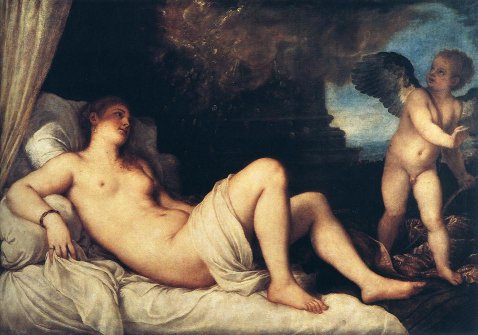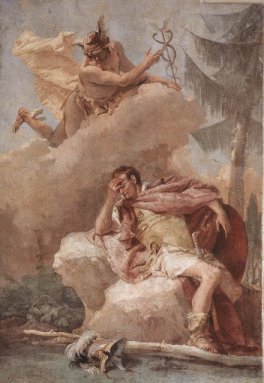|
Mythological
analogies |
|
|
David Adams Leeming ( Mythology: The Voyage of the Hero) suggests the following stages for the hero monomyth: 1. Miraculous conception and birth 2. Initiation of the hero-child 3. Withdrawal from family or community for meditation and preparation 4. Trial and Quest 5. Death 6. Descent into the underworld 7. Resurrection and rebirth 8. Ascension, apotheosis, and atonement. All of these stages can be seen as having parallels with the life of Christ, but it is the first that is relevant here. The number of mythical heroes whose life begins with a miraculous or virgin birth is startling: Krishna in Hinduism, the Buddha, King Arthur, Gilgamesh, and Horus in Egyptian mythology are probably the most familiar. Another element of the monomyth is the part human, part divine nature of the hero. Heracles and Theseus are examples from Greek mythology; perhaps the earliest example is Gilgamesh. |
|
|
The parallels between the story of
Mary and the traditions of goddesses such as Isis and Aphrodite have already been referred to. The
story of the Annunciation has elements in common with the story of Leda
and the Swan. |
|
|
|
|
| Salvador Dali's Leda Atomica is a complex image, and many art critics have scratched their heads and then pronounced wisely on it. Many see it as, if not a version of the Annunciation, then as an artist's response to it. The Swan, rather than ravishing Leda, seems to be whispering into her ear. | |
|
|
|
| Another story of the miraculous impregnation of a virgin is that of Danae; in this case the deed was performed by Zeus in the form of a golden shower. This was one of Titian's favourite themes. | |
|
|
|
|
|
|
|
Gabriel brings with him echoes of Hermes/Mercury, as shown in these paintings by Tiepolo. They are both winged messengers of Gods, and both carry their staff of office, though Gabriel has left it behind in this version. |
|
|
|
|
|
|
|



